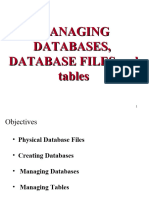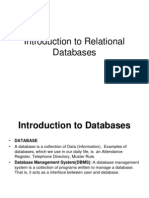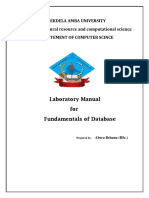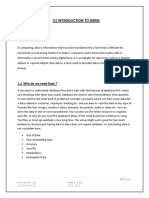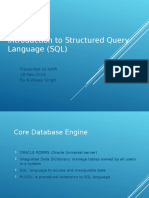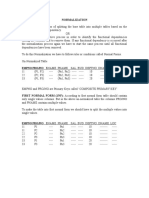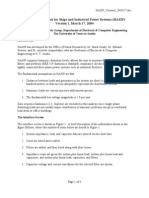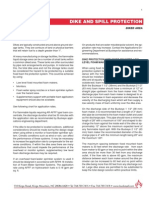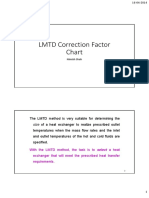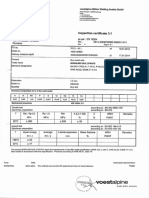0% found this document useful (0 votes)
290 views4 pagesData Definition Language-DDL
The document discusses various data definition language statements in SQL Server including CREATE, ALTER, DROP, and TRUNCATE. CREATE is used to create databases and database objects. ALTER modifies databases and objects. DROP deletes databases and objects. TRUNCATE deletes table data in pages without changing the table structure. The document provides syntax examples for creating databases and tables, altering databases and tables, dropping databases and tables, and truncating tables.
Uploaded by
Manjunatha KCopyright
© © All Rights Reserved
We take content rights seriously. If you suspect this is your content, claim it here.
Available Formats
Download as DOC, PDF, TXT or read online on Scribd
0% found this document useful (0 votes)
290 views4 pagesData Definition Language-DDL
The document discusses various data definition language statements in SQL Server including CREATE, ALTER, DROP, and TRUNCATE. CREATE is used to create databases and database objects. ALTER modifies databases and objects. DROP deletes databases and objects. TRUNCATE deletes table data in pages without changing the table structure. The document provides syntax examples for creating databases and tables, altering databases and tables, dropping databases and tables, and truncating tables.
Uploaded by
Manjunatha KCopyright
© © All Rights Reserved
We take content rights seriously. If you suspect this is your content, claim it here.
Available Formats
Download as DOC, PDF, TXT or read online on Scribd
/ 4


